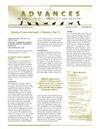Acral Lick Dermatitis (Lick granuloma) in an Adult Male Labrador Retriever Dog
Q4 Veterinary
引用次数: 0
Abstract
Introduction: Acral lick dermatitis is a skin injury commonly noticed in dogs with obsessive licking behavior. The lesions are usually noticed on the distal extremities which become raised, thickened, and plaque-like. Case report: A five-year-old male Labrador retriever dog was presented to the Small Animal Medicine Unit of Veterinary Clinical Complex (VCC), Rajiv Gandhi Institute of Veterinary Education and Research (RIVER), Puducherry, India, with a history of a superficial wound on the metatarsal region of the right hind limb with bleeding and continuous licking since a month. Clinical examination of the lesion showed a nodular eczematous lesion of 2 cm thickness, while other vital parameters were normal. Based on the licking behavior and other investigations, the skin lesions were diagnosed as acral lick dermatitis. Treatment included the application of Ointment Triamcinolone acetonide (topically) for a month. The licking was controlled using E-collar, and the dog was engaged in playful activities to overcome boredom. The lesion regressed completely within a month and hence was treated uneventfully. Conclusion: Diagnosis and identifying the root cause of the skin disorder can determine the course of treatment. Topical application of corticosteroids (triamcinolone acetonide) and methods, such as E-collar, to control the licking behavior, helped the animal’s recovery.成年雄性拉布拉多猎犬的肢端舔皮炎(舔肉芽肿)
肢端舔舐皮炎是一种常见的皮肤损伤,常见于狗的强迫舔舐行为。病变通常出现在远端肢体,呈凸起、增厚和斑块状。病例报告:一只5岁的雄性拉布拉多猎犬被送到印度普杜切里拉吉夫甘地兽医教育与研究所(RIVER)兽医临床综合医院(VCC)的小动物医学部门,其右后肢跖骨区有一个表面伤口,出血并持续舔舐一个月。临床检查为2厘米厚的结节性湿疹,其他生命参数正常。根据舔舐行为及其他调查,诊断为肢端舔舐皮炎。治疗包括应用曲安奈德软膏(局部)一个月。用电子项圈控制狗狗的舔舐行为,狗狗通过玩一些有趣的活动来克服无聊。病变在一个月内完全消退,因此治疗顺利。结论:诊断和确定皮肤病的根本原因可以决定治疗的过程。局部应用皮质类固醇(曲安奈德)和e领等方法控制舔舐行为,有助于动物的恢复。
本文章由计算机程序翻译,如有差异,请以英文原文为准。
求助全文
约1分钟内获得全文
求助全文
来源期刊

Advances in Small Animal Medicine and Surgery
Veterinary-Small Animals
自引率
0.00%
发文量
0
期刊介绍:
Each month, Advances in Small Animal Medicine and Surgery features abstracts of material from recent publications and presentations, followed by comments from specialists in the field. Small animal veterinarians and veterinary technicians gain new insight into specific topics and increase their skills in judging how to apply new tests and treatments in practice situations.
 求助内容:
求助内容: 应助结果提醒方式:
应助结果提醒方式:


